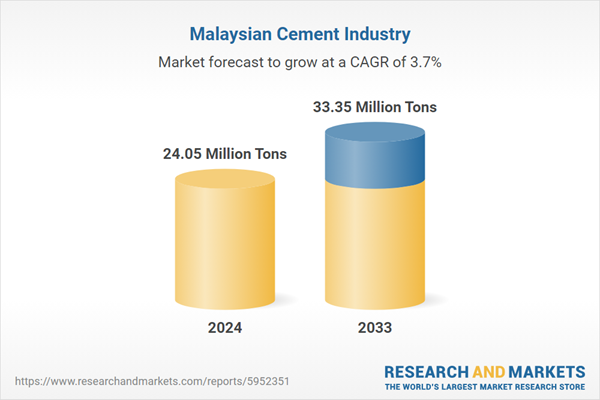The demand for cement in Malaysia remains strong, largely driven by ongoing major infrastructure projects. These projects are key pillars supporting the medium-to-long-term growth of the cement industry, indicating a potential increase in construction activities across Peninsular Malaysia.
Several factors contribute to the buoyancy of Malaysia's cement industry. Low inventory levels, along with a focus on emerging sectors like solar panels and electric vehicles, coupled with the anticipated recovery in China's manufacturing and property sectors, are expected to fuel future demand growth.
Recent trends indicate a robust performance in the cement market, with bulk cement prices experiencing a notable 24.7% year-on-year increase in August 2023. This surge contrasts with the three-year average price reported between 2019 and 2021, signaling the industry's strength and resilience.
Despite the promising outlook, the cement industry faces various challenges. Rising operational costs, driven by factors such as escalating raw material prices, soaring coal costs, and increased shipping expenses, pose significant challenges to businesses operating in the sector. Additionally, the appreciation of the US dollar against the ringgit further tightens profit margins.
The surge in coal prices is identified as a major contributor to the rise in cement prices, with forecasts indicating a continuation of this trend due to strong demand in ASEAN nations. The withdrawal of electricity subsidies for industrial customers exacerbates the situation, further increasing the cost of production.
Supply chain disruptions and regional disparities also complicate matters for the cement industry. Businesses importing cement or raw materials face challenges in maintaining sustainable profit margins, particularly in regions like Sarawak, where a shortage of cement, combined with escalating shipping costs and currency strength, leads to significantly higher prices compared to other parts of Malaysia.
Moreover, balancing supply and demand poses a significant challenge, particularly in regions experiencing rapid infrastructure development. Sarawak, for example, faces a surge in cement demand due to major infrastructure projects, necessitating local producers to ensure an adequate supply to meet escalating requirements.
In conclusion, while Malaysia's cement industry benefits from strong demand driven by infrastructure projects and emerging sectors, various challenges such as rising operational costs, supply chain disruptions, and regional disparities must be addressed to sustain growth and stability in the market. According to the publisher, the cement production in Malaysia is projected to increase from 24.05 million metric tonnes in 2024 to 33.35 million metric tonnes by 2033, exhibiting a compound annual growth rate (CAGR) of 3.7%.
Topics covered:
- Malaysia Cement Industry Overview
- Economic environment and policy environment of cements in Malaysia
- Malaysian cement market size from 2019 to 2023
- Analysis of major Malaysian cement manufacturers
- Key Drivers and Market Opportunities of Malaysia’s Cement Industry
- What are the key drivers, challenges and opportunities for the Malaysian cement industry during the forecast period 2024-2033?
- What is the expected revenue of the Malaysia Cement market during the forecast period 2024-2033?
- What strategies are adopted by the key players in the market to increase their market share in the industry?
- Which segment of the Malaysian Cement Market is expected to dominate the market in 2033?
- Malaysia Cement Market Forecast from 2024 to 2033
- What are the main headwinds facing Malaysia’s cement industry?
Table of Contents
Companies Mentioned
- YTL Cement Berhad
- Lafarge Rawang Plant
- Hume Cement Sdn. Bhd.
- Tasek Corporation Berhad
- TCB
- Cement Industries of Malaysia Berhad
- CIMA
Methodology
Background research defines the range of products and industries, which proposes the key points of the research. Proper classification will help clients understand the industry and products in the report.
Secondhand material research is a necessary way to push the project into fast progress. The analyst always chooses the data source carefully. Most secondhand data they quote is sourced from an authority in a specific industry or public data source from governments, industrial associations, etc. For some new or niche fields, they also "double-check" data sources and logics before they show them to clients.
Primary research is the key to solve questions, which largely influence the research outputs. The analyst may use methods like mathematics, logical reasoning, scenario thinking, to confirm key data and make the data credible.
The data model is an important analysis method. Calculating through data models with different factors weights can guarantee the outputs objective.
The analyst optimizes the following methods and steps in executing research projects and also forms many special information gathering and processing methods.
1. Analyze the life cycle of the industry to understand the development phase and space.
2. Grasp the key indexes evaluating the market to position clients in the market and formulate development plans
3. Economic, political, social and cultural factors
4. Competitors like a mirror that reflects the overall market and also market differences.
5. Inside and outside the industry, upstream and downstream of the industry chain, show inner competitions
6. Proper estimation of the future is good guidance for strategic planning.

LOADING...
Table Information
| Report Attribute | Details |
|---|---|
| No. of Pages | 60 |
| Published | April 2024 |
| Forecast Period | 2024 - 2033 |
| Estimated Market Value in 2024 | 24.05 Million Tons |
| Forecasted Market Value by 2033 | 33.35 Million Tons |
| Compound Annual Growth Rate | 3.7% |
| Regions Covered | Malaysia |
| No. of Companies Mentioned | 7 |









